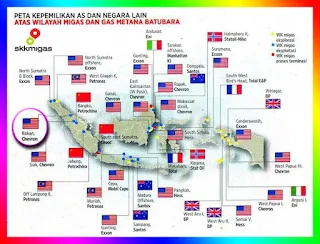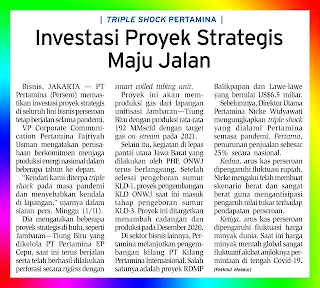Indonesia is considered to still have the potential for oil and gas to realize the national oil production target of 1 million barrels per day (BPD) and 12 billion cubic feet of gas per day by 2030. However, to achieve that, the government needs to change the fiscal aspects of current oil and gas contracts to be more flexible. according to the conditions of the oil and gas block.
Bij Agarwal
Acting President of the Indonesia Petroleum Association (IPA), Bij Agarwal, said that currently the global oil and gas industry has been hit by the oil price war and the Covid-19 pandemic. This condition forces global oil and gas companies to cut their investment budgets, one of which is to prioritize projects with a high Internal Rate of Return/IRR.
As a result, oil and gas investment funds that enter Southeast Asia, including Indonesia, are getting smaller. So that Indonesia must be competing to attract these funds. On the other hand, he added, Indonesia is less attractive than other countries.
Referring to Wood Mc. Kenzie who saw how attractive the fiscal prerequisites for oil and gas in certain countries were related to the potential for oil and gas, fiscal and policy stability, and project costs, Indonesia got 2.35 points. This is despite the fact that the average level of global fiscal attractiveness is at the level of 3.3. In fact, Indonesia still has oil and gas potential that can be developed to realize the oil production target of 1 million BPD in 2030.
"For that, we have to find a way so that this limited investment fund can be allocated in Indonesia by oil and gas companies. One of them is by increasing the economic level of oil and gas projects in Indonesia, "said Bij in an online discussion entitled The Role of Internal Audit to Safeguard 1 Million Barrel Oil Production Target.
IPA, he explained, noted three things that must be improved to achieve the target of 1 million BPD. First, the government establishes a globally competitive fiscal aspect, which includes flexibility in the types of oil and gas contracts, better split, gas prices, the principle of Assume and Discharge, taxation, and Tax Holiday.
Second, the government must be able to provide sanctity of contracts, including preventing criminalization attempts. Finally, the ease of doing business, including more efficient licensing and approval.
"The target of 1 million BPD is impressive, but this can be achieved if these three things are met. The resources are there, we have to make it economically attractive, ”said Bij.
Hilmi Panigoro
The President Director of Medco Energi Hilmi Panigoro also shared the same opinion. According to him, the oil production target of 1 million BPD is not impossible to achieve as long as the fiscal aspects offered are very attractive.
According to him, Oman has succeeded in increasing its oil production from below 700 thousand BPD to more than 1 million BPD in this way. He said that Oman's additional oil production was mostly obtained from enhanced oil recovery (EOR) activities.
To encourage oil and gas companies to strive to increase the production of block oil under its management, Oman provides special contracts according to the conditions of each oil and gas block. Medco, which manages one of the blocks in the country, is given a service contract.
"We are not given any risk, all costs are reimbursed, we are only asked to increase production and get a reward of 5% of the resulting production. So there is an incentive for investors to be enthusiastic about doing various technically and financially ways to increase production, "Hilmi explained.
According to Hilmi, this strategy can be emulated in Indonesia. Moreover, one of the strategies to achieve 1 million BPD oil production is to implement EOR. The government he said that he could form a team that identified several fields that could be candidates for EOR and drafted special contracts tailored to the conditions of each field.
"The fiscal term for each field must be different. That's the key to success. So far, EOR is the willingness to create a flexible fiscal term in accordance with the field. Today there are 1-2 field candidates, but they cannot be EOR due to fiscal term constraints, "he explained.
Dwi Soetjipto
Head of the Special Task Force for Upstream Oil and Gas Business Activities (SKK Migas) Dwi Soetjipto said there are four strategies to pursue the production of 1 million BPD in 2030. The details are maintaining existing production, accelerating the transformation of resources to reserves, EOR, and exploration.
Blogger Agus Purnomo in SKK Migas
To maintain existing production, his company has realized an additional 18,300 BPD of oil production and 17 million standard cubic feet per day / MMscfd of gas this year. SKK Migas has also succeeded in encouraging initial investment in the Rokan Block to drill wells during the management transition period.
Sakakemang Block
Furthermore, to accelerate the addition of reserves, his party has accelerated the operation of PB Field, Mahato Block, and KBD Field, Sakakemang Block. In addition, his party also has a Massive Development Plan (MDP) program and delineation well drilling to accelerate the development of undeveloped findings.
"There are 3 MDPs with potential reserves of 88 MMBOE (million barrel oil equivalent) that have been approved, 3 MDPs of 450 MMBOE were submitted to the Minister of Energy and Mineral Resources, and 3 MDPs of more than 200 MMBOE in the evaluation," Dwi said.
For EOR activities, his party is currently evaluating the EOR chemical substance EOR pre-plan in Minas Field, Rokan Block with an operation target in 2024. PT Pertamina EP has also conducted EOR polymer field trials in Tanjung Field. Regarding exploration activities, PT Pertamina Hulu Energi has conducted 2D seismic data acquisition in an open area of 32,200 km.
"This data will be open in the next year," he said.
Next, there are also plans to drill large wells, namely 6 giant wells and 2 discovered wells. The success ratio of exploration drilling in Indonesia in 2020 is recorded at 55%. Furthermore, to accelerate the addition of reserves, his party has accelerated the operation of PB Field, Mahato Block, and KBD Field, Sakakemang Block. In addition, his party also has a Massive Development Plan (MDP) program and delineation well drilling to accelerate the development of undeveloped findings.
"There are 3 MDPs with potential reserves of 88 MMBOE (million barrel oil equivalent) that have been approved, 3 MDPs of 450 MMBOE were submitted to the Minister of Energy and Mineral Resources, and 3 MDPs of more than 200 MMBOE in the evaluation," Dwi said.
For EOR activities, his party is currently evaluating the EOR chemical substance EOR pre-plan in Minas Field, Rokan Block with an operation target in 2024. PT Pertamina EP has also conducted EOR polymer field trials in Tanjung Field. Regarding exploration activities, PT Pertamina Hulu Energi has conducted 2D seismic data acquisition in an open area of 32,200 km.
"This data will be open in the next year," he said.
Next, there are also plans to drill large wells, namely 6 giant wells and 2 discovered wells. The success ratio of exploration drilling in Indonesia in 2020 is recorded at 55%.
Investor Daily, Page-10, Tuesday, Nov 3, 2020


















































